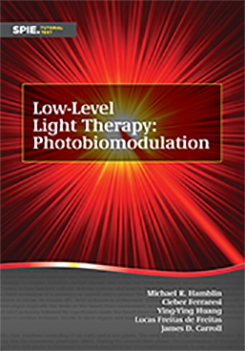|
18.1 Mechanisms of Photobiomodulation in the Central Nervous System The discussion of transcranial low-level laser therapy has moved past its biological effects into a search for how light energy - specifically, from lasers or LEDs - works at the cellular and organism levels. With a wide range of different applications of photobiomodulation (PBM), it is necessary to find and understand the optimal parameters for each. Heat absorption, one of several unlikely mechanistic explanations underlying PBM, is closely tied to the use of lasers, but the way the light is delivered does not meaningfully raise brain temperature, implying that the photothermal effects from light energy do not play a significant role in explaining the benefits of PBM. Rather, photochemistry is becoming the accepted hypothesis for explaining the biological effects of light absorption in cells and tissues. These effects rely on the absorption of light by chromophores within cells to produce the various biological effects, such as an increase of adenosine triphosphate (ATP), deoxyribonucleic acid (DNA), and ribonucleic acid (RNA); the release of nitric oxide (NO); cytochrome c oxidase activity; the regulation of reactive oxygen species (ROS); and changes to organelle membrane activity in mitochondria. In order for the photons to effectively reach their target area, the penetration of the light through the tissue must be maximized by choosing an appropriate wavelength. This “optical window” ranges from 600 nm to 1200 nm and involves almost exclusively infrared and near-infrared light (600 nm to 1100 nm). |
|
|


